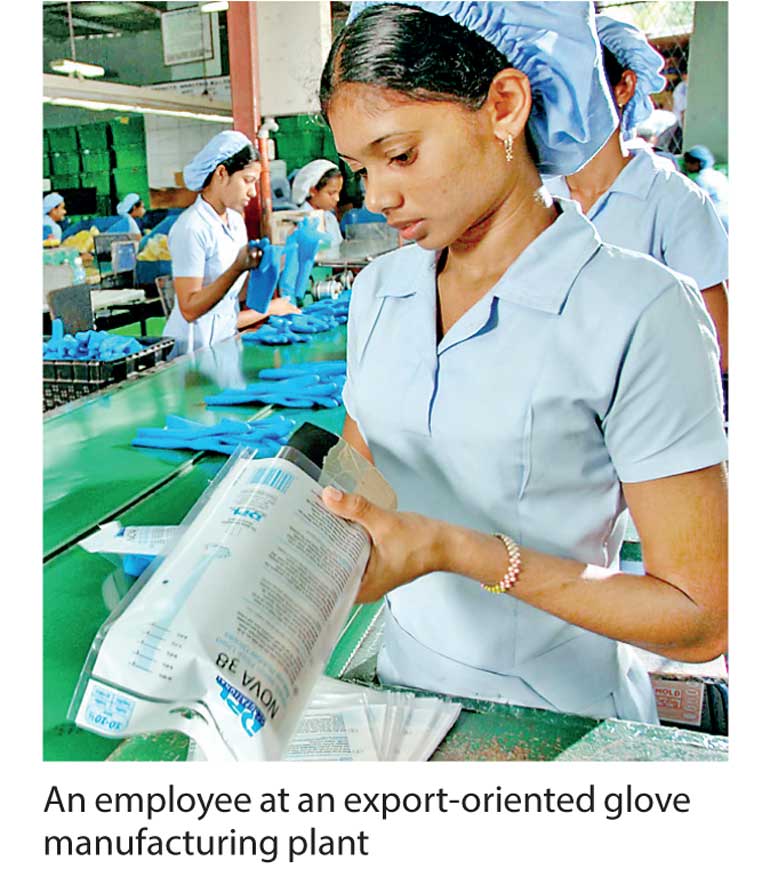Thursday Nov 14, 2024
Thursday Nov 14, 2024
Wednesday, 10 May 2017 00:00 - - {{hitsCtrl.values.hits}}

The Central Bank confirmed yesterday that private sector credit growth is nudging down and other macroeconomic factors are satisfactory, prompting it to keep policy rates unchanged.
Most analysts expected such a stance during the May monetary policy review.
The Central Bank kept the Standing Deposit Facility Rate (SDFR) at a four-year peak of 7.25% and standing lending facility rate (SLFR) at 8.75%, its highest since July 2013.
In March policy rates were revised upwards by 25 basis points.
“With the upward adjustment in market interest rates, the year-on-year growth of credit extended to the private sector by commercial banks decelerated gradually to 21.0% by end February 2017 and 20.4% by end March 2017, from 21.9% recorded at end 2016,” the Central Bank said.
“However, despite the deceleration observed during the first two months of 2017, the year-on-year growth of broad money (M2b) remained high at 20.0% in March 2017 compared to 18.4% at end 2016 mainly on account of the expansion in credit to both private and public sectors in absolute terms during the month,” it added. This included the expansion of credit to public corporations, some of which were affected by the impact of the drought and increased international energy prices.
“As market interest rates remain substantially high, both in nominal and real terms, it is expected that credit extended to the private sector will decelerate to the envisaged levels by end 2017,” the Central Bank said.
It also said as expected, the Colombo Consumer Price Index (CCPI, 2013=100) based headline inflation, decelerated on a year-on-year basis to 6.9% in April 2017 from 7.3% in March 2017, and CCPI based core inflation also decelerated to 6.8% in April 2017 from 7.3% recorded in the previous month. It is expected that inflation based on the National Consumer Price Index (NCPI, 2013=100), which edged up in March 2017, will also display a similar decline in April 2017.
Supported by monetary policy adjustments from end 2015, inflation is projected to decelerate gradually to the desired mid-single digit levels by end 2017, although there could be some monthly fluctuations due to short term supply side disruptions and the base effects of tax revisions in 2016.
In the external sector, the cumulative trade deficit increased to $1.7 billion in the first two months of 2017 from $1.2 billion in the same period of 2016. This was a reflection of the combined impact of the decline in export earnings and increased expenditure on imports, particularly as a result of the drought conditions.
Tourist arrivals and related earnings improved in the first four months of 2017 in spite of the partial closure of the Bandaranaike International Airport during the first quarter, although there was a moderation in inflows from workers’ remittances during the first quarter of the year.
Both the Government securities market and the Colombo Stock Exchange experienced foreign inflows in recent months, while the Government issued its 11th International Sovereign Bond (ISB) worth $1.5 billion this month, priced favourably at 6.2%.
These inflows, along with other expected financial inflows to the government and the likely disbursement of the third tranche under the IMF Extended Fund Facility (EFF), would support the balance of payments and the country’s reserve position. As at end April 2017, gross official reserves were estimated at $5 billion compared to $6 billion at end 2016, while the Sri Lankan Rupee depreciated by 1.5% against the US dollar during the year up to 5 May.
Considering these factors, the Monetary Board, at its meeting held on 8 May was of the view that the current monetary policy stance is appropriate.
“The Central Bank will closely monitor macroeconomic developments in the period ahead in order to adopt further measures, if required,” it added.
According to the monthly Index of industrial Production (IIP) released by the Census and Statistics Department, the volume of industrial production in Sri Lanka has increased by 1.5% in March 2017 compared to the same month in 2016.
IIP increased to 109.5 in February from 107.8 in March 2016.
The industrial production of the manufacturing sector for the first quarter of 2017 has increased by 1.1% to 105.5 compared to the same quarter in 2016.
Among the manufacturing industries, the volume of products of ‘Other Non‐Metallic Mineral Products’ (21.5%), ‘Wearing Apparels’ (5.9%) and ‘Food Product’ (5.8%) have shown remarkable increases in production during March, 2017 compared to that of March 2016.
The increase in volume of production of the non‐metallic mineral products industry could be attributed to the growth of the construction industry in the recent past.
The manufacturing industries ‘Coke and Refined Petroleum Products’ (17.3%), ‘Wood and Products of Wood’ (16.5%) and ‘Chemical and Chemical Products’ (15.1%) reported decreases during this period.